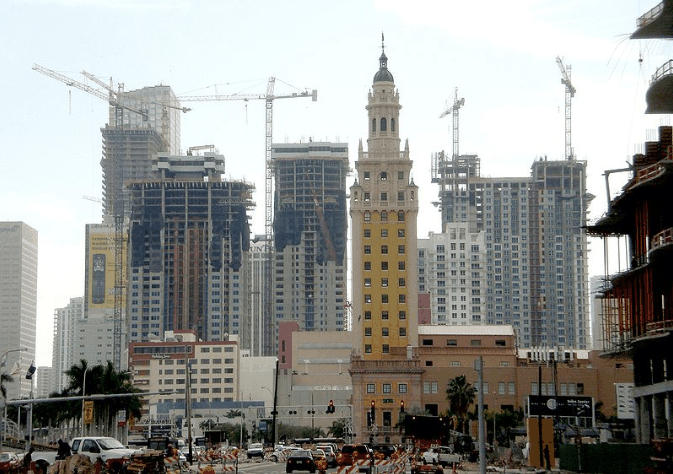
A few months back I had dinner with an American hedge fund manager. The fund had made good returns shorting the United States and Irish housing markets, and was undertaking reconnaissance of Australia’s capital city housing markets to determine whether similar shorting opportunities were available.
In the days prior to the meeting, the fund manager had spent time touring Melbourne’s housing developments – both detached houses on the urban fringe as well as apartments in the inner and middle suburbs. When I asked the fund manager about what he thought of Melbourne’s housing construction boom, he answered along the lines of: “Melbourne reminds me of Miami”.
For readers not familiar with Miami (Florida), it is located on the South Eastern tip of the United States and is the seventh largest metropolitan area in the country, with a population of around 5.5 million people. It also happens to be one of the cities hardest hit by the recent United States housing bubble/bust (see below chart):
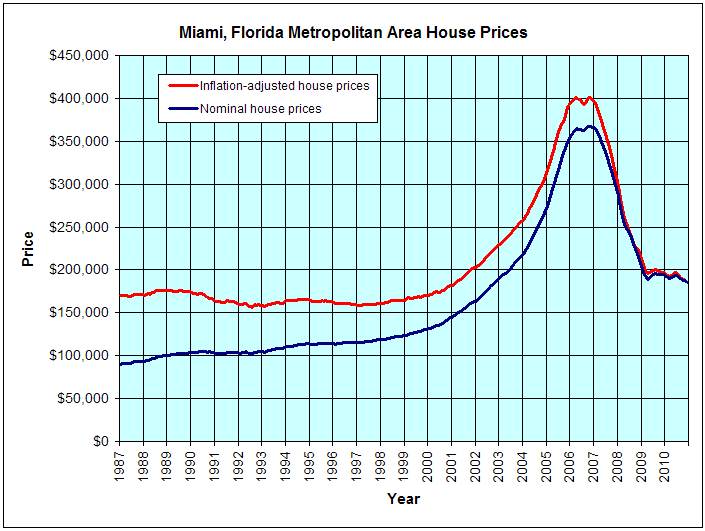
Although Miami’s economy in many ways more closely resembles the cities of Queensland than Melbourne – owing to its significant tourism base (related to its tropical climate) and its inward migration of retirees – its housing market has some distinct similarities to that of Melbourne.
As with all of Australia’s capital cities, the state of Florida had in place (revoked in June this year) state-wide growth management (‘smart growth’) policies that aimed to promote urban consolidation by restricting greenfield housing development (‘urban sprawl’). In the case of Miami, these regulations included: an urban growth boundary (called the “Urban Development Boundary”), which precluded development outside of Miami-Dade county’s western and southern edges as well as its southeastern coastal fringe; high impact fees, which forced developers to pay for new roads, schools and parks associated with growth; and comprehensive plans to determine where and how much development would be permitted.
By reducing the amount of land available for development, taxing new construction, and requiring developers to seek planning permission prior to construction (often a complicated and time consuming process in itself), Miami’s growth management regulations made it impossible for the building industry to supply homes both quickly and cheaply in response to increases in demand from easier credit, population growth and income growth (amongst other things).
As Miami’s housing prices rose quickly in the early-2000s (see above chart), it took until 2004 before Miami’s building industry began responding with increased levels of new home construction (see below chart).
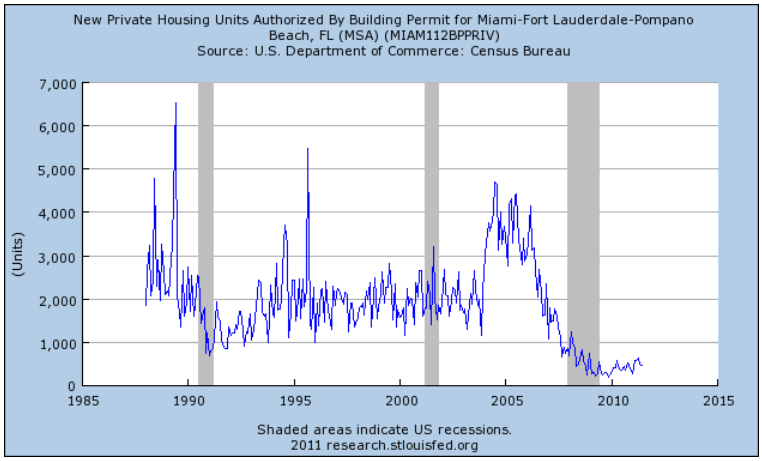
However, by this stage, real estate speculation was at fever pitch with speculators paying over the odds for off-the-plan condominiums and detached homes that they hoped to flip for a profit once completed. The economy was also booming, with employment at record highs:
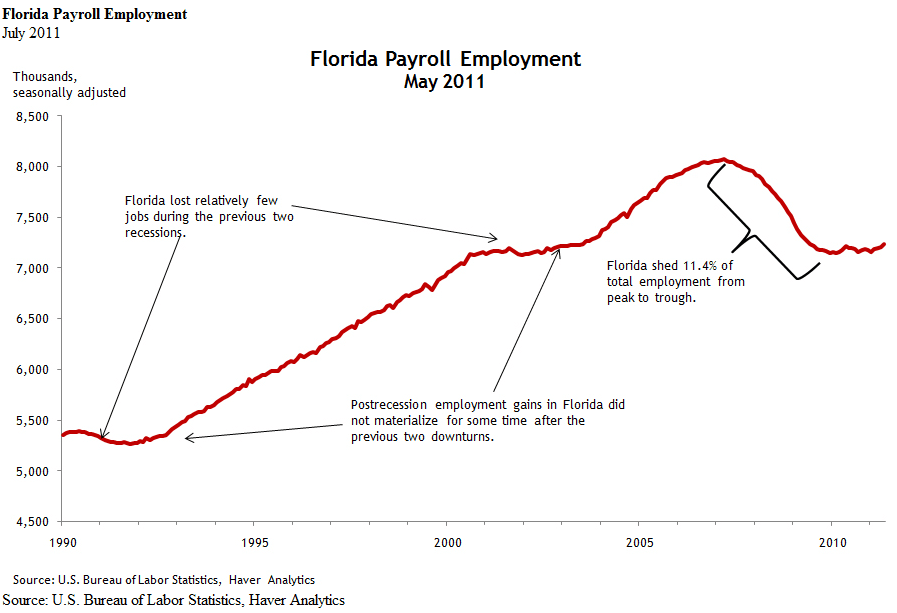
And strong gains in employment in the construction industry:
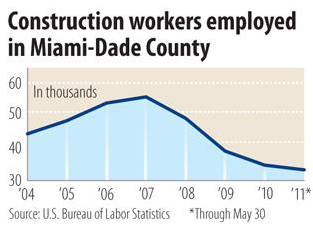
Just as home sales were peaking:
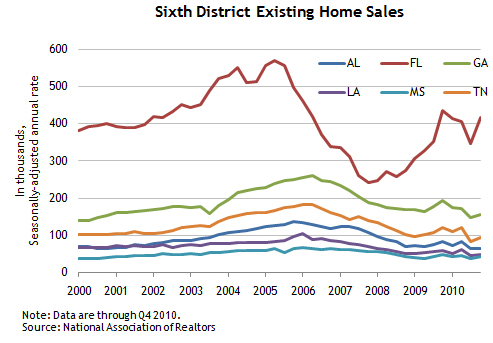
The rest is history. Miami’s supply response came too late to mitigate the price rises, with many of the condominium (apartment) and detached housing developments instead hitting the market after prices began to fall (see, for example, this video).
Now the Miami housing market is oversupplied, with most homes selling for a fraction of their former valuations. Meanwhile, Florida is ranked 8th in the United States in foreclosures, despite it being a full recourse state (i.e. where creditors can pursue a borrower’s other assets following mortgage default). And the unemployment rate in Miami has surged from 3.6% in January 2007 to 11.1% currently, with half of Florida’s construction jobs having disappeared.
You can now see why my ears pricked up when the hedge fund manager likened Melbourne to Miami. While I do not consider Melbourne to be at risk of a Miami-style housing crash, Melbourne is, nevertheless, Miami-lite in some ways.
For starters, Melbourne’s building boom began long after home prices began rising, with much of this construction in apartments:
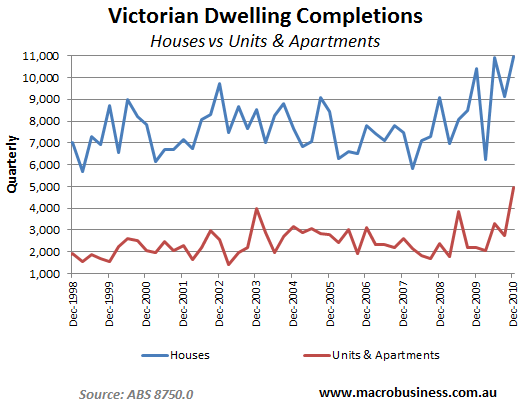
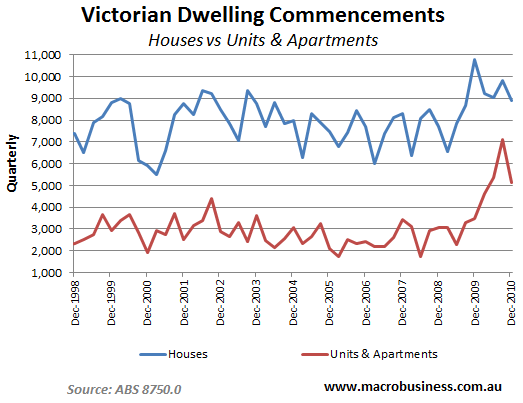
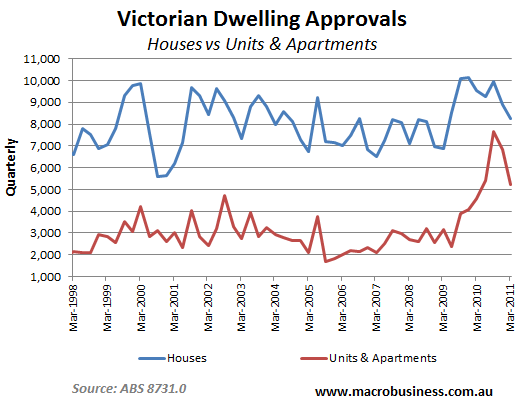
Second, just like in Miami, sales volumes in Melbourne have fallen significantly prior to the homes currently under construction being completed:
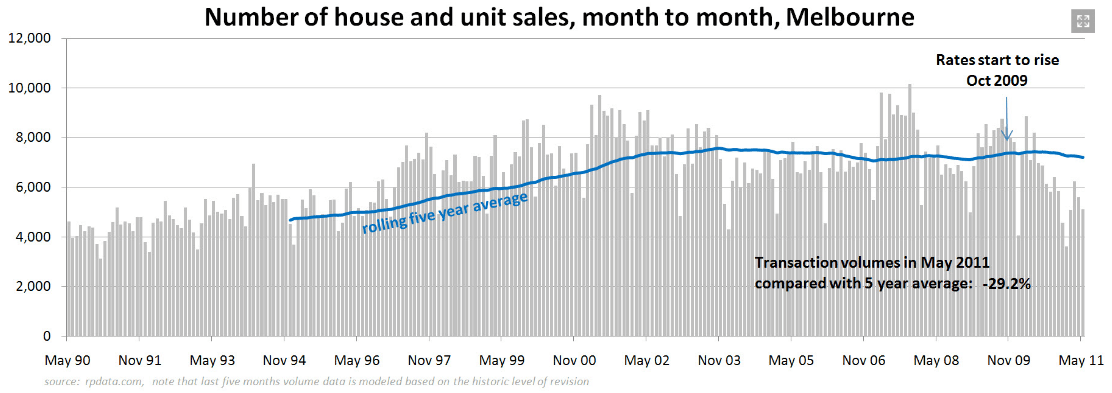
And the number of homes on the market has increased significantly:
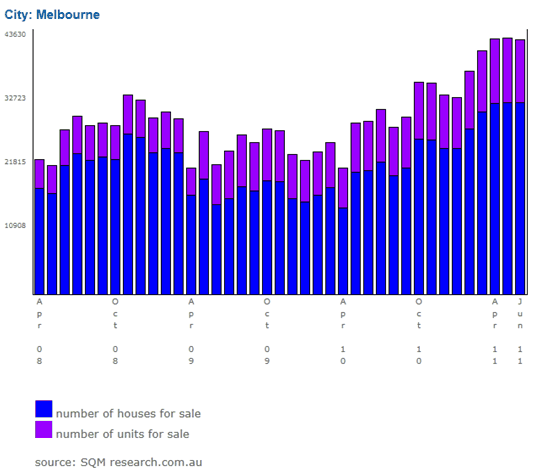
So far, the bulk of unsold homes in Melbourne appear to be new homes on Melbourne’s urban fringe; although with so many apartments currently under construction, the glut could easily move inwards. An article published on Friday in Property Observer provides a useful insight into the current state of play:
Stale stock on the market in Melbourne ballooned from 19,800 to 31,600 properties in the last three months, according to Prosper Australia spokesman David Collyer. He says stale stock is particularly accumulating in new suburbs on the city fringe.
Collyer defines stale stock as unsold property on the market for more than 60 days.
“Gardens have been primped, interiors polished up, advertisements run, open for inspections attended, auctions conducted and … no sale,” Collyer notes, arguing that it points at a major correction, as the supply and demand equation would need to be restored by price slides across Melbourne.
“Hardest hit are the first-home buyer hunting grounds in Melbourne’s west, with over 5,600 brand-new houses stale and more being added daily.”
In Derrimut, Werribee and Point Cook, the postcode 3030, there were 2650 stale listings, in the 3029 postcode of Tarneit, Truganina, Hoppers Crossing some 1932 sale listings and at Roxburgh Park and Craigieburn, postcode 3064, some 1095 stale listings.
“To give these figures perspective, only 564 Point Cook properties sold in all last year,” Collyer said.
“This overhang is massive. Developers miscalculated. They built way ahead of buyers and have now come to a grinding halt.”
He forecast this could lead to abrupt and widespread unemployment in the construction trades as projects are completed and workers laid off.
The last two sentences are perhaps indicative of where Melbourne’s housing situation most mirrors Miami’s. With the manufacturing sector in terminal decline, Melbourne’s economy has become increasingly reliant on construction. However, with the pipeline of homes currently under construction nearing completion, sales volumes falling, unsold inventories increasing, and population growth declining, there is a distinct possibility that Melbourne’s construction industry could grind to a halt, leading to a sharp increase in unemployment.
While no two housing markets are ever the same, Melbourne’s has enough similarities to Miami’s to invoke caution about the situation currently developing.

